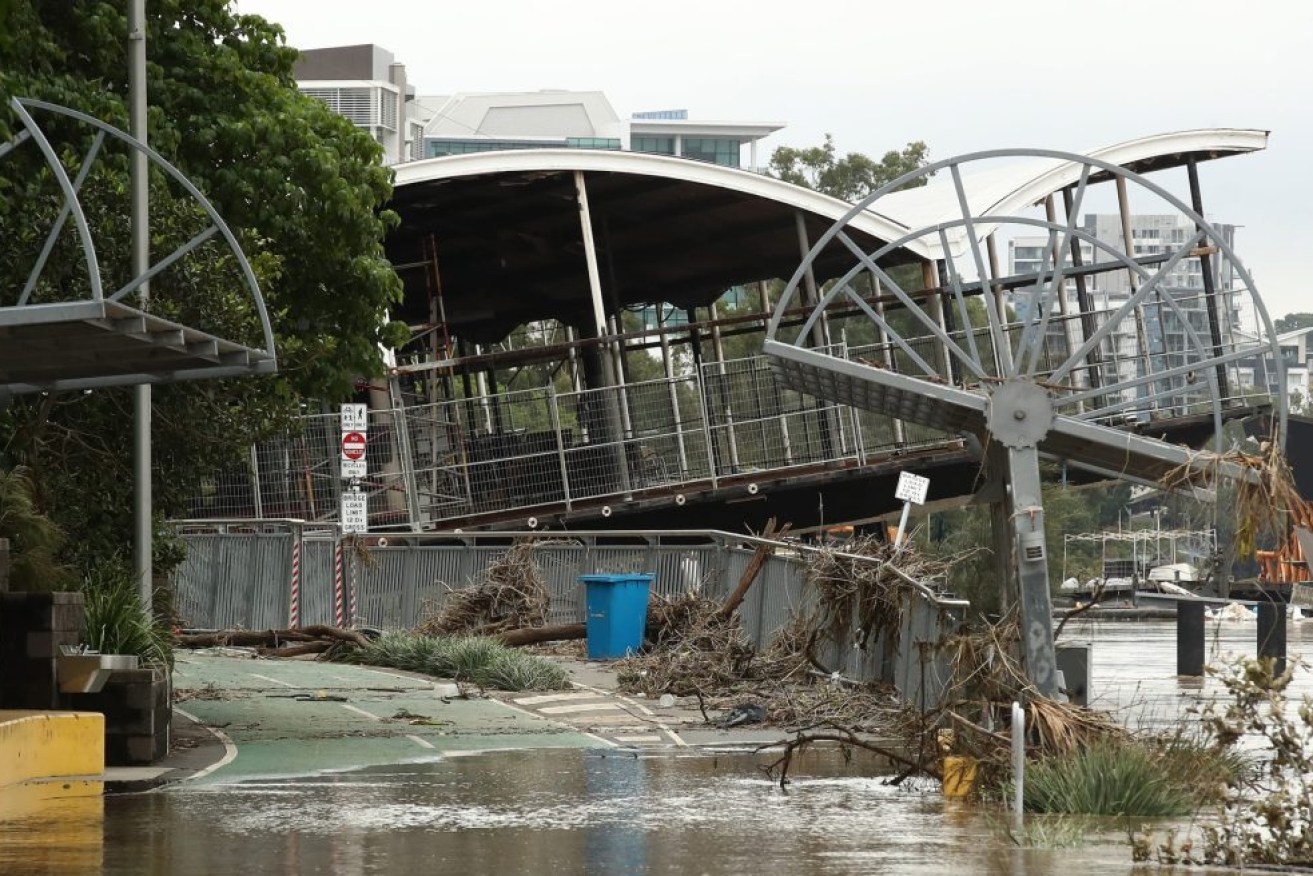After a dozen disasters, how number 13 caught the insurance industry off-guard
The insurance industry has admitted it was overwhelmed by the scale and ferocity of the 2022 east coast flood disaster which caused $6 billion in damages and has accepted the recommendations of a report into how it responded.


The remnants of Drift Restaurant resting on the Bicentennial Bikeway in the aftermath of the March 2022 flood. (AAP Image/Jono Searle)
The flood led to 240,000 claims covering $3.4 billion in home property claims and the industry was had to employ an additional 2200 staff to deal with the response.
The floods, which were particularly devastating in south east Queensland and northern NSW, followed 12 other catastrophes since the Black Summer fires as well as the Covid pandemic.
Residents in towns like Lismore, in NSW, are still dealing with the impacts of the floods.
The report found there were external factors which made it a challenging time for the sector, including a labour shortage as well as the spiralling cost of building materials and vehicles.
“The scale (of the floods) tested claims processes at a scale never before seen and exposed vulnerabilities in insurers’ claims and complaint handling procedures, particularly in catastrophe planning, resourcing, processes and technology, communications and governance,” the report found.
The report found that the industry needed to improve catastrophe planning, improve customer experiences during catastrophes and redesign their resourcing to cope with such events, particularly staffing.
It also had to improve communication and co-ordination and improve its ability to gather and understand data and insights.
Insurance Council chief executive Andrew Hall said the industry acknowledged there were failures in systems and processes which affected customers.
“The industry apologises to those customers whose claims were not handled to the standard the industry strives to achieve and we are working hard to better prepare for future extreme events,” he said.
“Australia has the conditions to underpin an insurance industry at the global frontier of extreme weather responsiveness.
“Repeated exposure to such events, coupled with established disaster institutions and frameworks, means Australian insurers are well placed to show the world how to respond effectively and efficiently to extreme weather events. This will always need to be weighed up against the cost impacts and keeping insurance affordable.”












